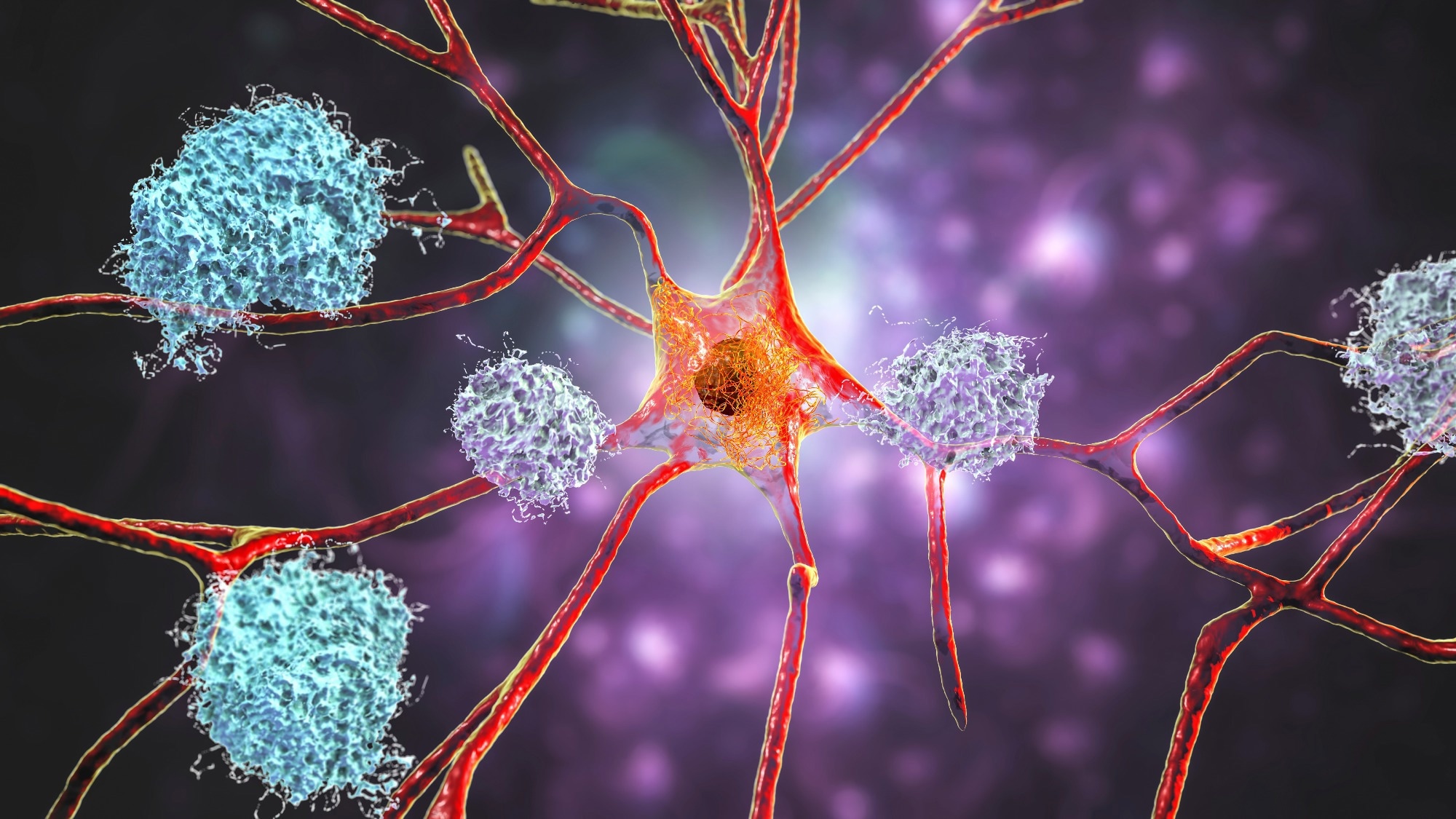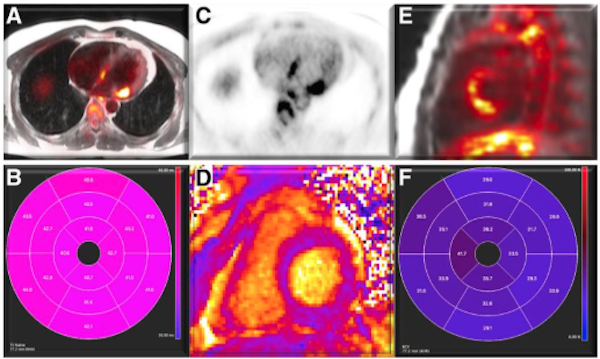A groundbreaking study shows that two repurposed cancer drugs, when combined, can correct complex brain cell dysfunction and restore memory in Alzheimer’s mouse models, offering hope for new multi-targeted therapies.
Study: Cell-type-directed network-correcting combination therapy for Alzheimer’s disease. Image Credit: Kateryna Kon / Shutterstock
In a recent study published in the journal Cell, a group of researchers investigated whether combining the aromatase inhibitor letrozole and the topoisomerase I inhibitor irinotecan could reverse cell–type–specific transcriptomic disturbances and improve cognition and pathology in Alzheimer’s disease (AD) models.
Background
Every three seconds, someone develops dementia, and more than 50 million people worldwide now live with AD, a figure forecast to triple by 2050. Existing monoclonal antibodies slow amyloid beta (Aβ) accumulation yet leave most patients cognitively impaired, partly because AD involves intertwined neuronal and glial dysfunctions.
Recent single-nucleus RNA sequencing (snRNA-seq) studies have revealed that excitatory neurons, inhibitory neurons, microglia, astrocytes, and oligodendrocyte precursor cells (OPCs) each follow distinct yet interacting degenerative programs.
Repurposing approved drugs offers a faster, safer route to intervention, but single-target candidates rarely tackle this cellular heterogeneity. Therefore, the correction of multi-cell-type networks warrants exploration.
The study identified 25 drugs with predicted multi-cell-type effects, but only five showed a reduced AD risk in human clinical records, including letrozole and irinotecan, which were prioritized for their complementary neuronal and glial targeting. Further research should determine whether dual-action regimens translate into durable clinical benefit and address the sex-specific responses observed in preclinical models.
About the Study
Investigators first mined integrated human post-mortem snRNA-seq datasets from three independent studies to generate cell-specific AD expression signatures. They then matched these against the Connectivity Map (CMap) compendium, a database of drug perturbations primarily using cancer cell lines, to identify drugs whose perturbation profiles inversely correlated with disease patterns.
Electronic Medical Record (EMR) analytics of 1.4 million adults aged ≥ 65 years across six University of California health systems revealed that exposure to letrozole or irinotecan correlated with a lower AD incidence after propensity-matched adjustment for demographics, comorbidities, and cancer indications.
Notably, cancer patients have lower baseline AD risk, and letrozole’s effects in males were inconclusive due to limited data.
To validate causality, researchers crossed 5xFAD amyloid-overproducing mice with P301S mutant tau transgenic (PS19) mice. They allocated 20 sex-balanced, double-transgenic animals to each of four groups: vehicle, letrozole (1 mg/kg), irinotecan (10 mg/kg), or the combination, administered every other day by intraperitoneal injection for three months, starting at 4–5 months of age.
Morris water maze assessed spatial learning, while brains underwent Sudan Black volumetry, Thioflavin S Aβ staining, AT8 phosphorylated tau (p-tau) immunofluorescence, Iba1 microglial and GFAP astrocytic histology, plus NeuN neuronal counts. Parallel hippocampal snRNA-seq libraries were prepared using 10x Genomics’ Chromium technology and analyzed with UMAP clustering to map drug-induced transcriptomic shifts.
Study Results
During six days of hidden platform training, swim latencies did not differ between groups, confirming equal baseline performance across the two groups. In probe trials, only combination-treated mice spent significantly more time and made more crossings in the target quadrant at both 24 hours and 72 hours, demonstrating recovery of both short- and long-term spatial memory. In contrast, single agents showed partial benefit in males, while females saw negligible improvement. Visual acuity and motility were unchanged, excluding sensorimotor confounds.
Morphologically, all treatments reduced hippocampal atrophy, but the combination achieved the greatest volume preservation. Aβ plaque burden fell across groups, yet p-tau deposition declined only with dual therapy, aligning with its unique cognitive efficacy.
Irinotecan, alone or in combination, reduced microgliosis (Iba1 area), and letrozole monotherapy significantly rescued CA1 neuronal loss, whereas astrocytosis (GFAP) dropped modestly under irinotecan alone. Mechanistically, letrozole preserved neurons while irinotecan tempered glial inflammation – effects that combined additively.
At the transcriptomic level, combination therapy expanded the proportions of CA1 and CA3 pyramidal neurons within hippocampal nuclei. Cell-cell communication analysis showed dampened hyperactive signaling from glia to neurons. Across six major cell types, the regimen counterregulated AD signature genes, notably normalizing APOE expression in microglia, astrocytes, and OPCs.
Gene ontology enrichment tied reversed neuronal genes to estrogen signaling and synaptic plasticity, aligning with letrozole’s aromatase blockade, while glial reversals highlighted oxidative stress mitigation and cholesterol transport, consonant with irinotecan’s anti-inflammatory profile.
Conclusions
To summarize, the letrozole-irinotecan combination delivered a convergent, cell-type-directed therapy that surpassed either monotherapy by restoring memory, shrinking Aβ plaques, lowering p-tau deposition, dampening microgliosis and astrocytosis, and preserving hippocampal neurons. snRNA-seq confirmed the regimen rewired disease-specific gene networks across neurons and glia.
These preclinical results, tempered by methodological caveats (e.g., cancer-cell-derived drug signatures), support repurposed multi-target strategies for AD and justify clinical trials testing this affordable anticancer duo in at-risk populations, with a focus on sex-specific efficacy.
Journal reference:
- Li, Y., Serras, C.P., Blumenfeld, J., Xie, M., Hao, Y., Deng, E., Chun, Y. Y., Holtzman, J., An, A., Yoon, S. Y., Tang, X., Rao, A., Woldemariam, S., Tang, A., Zhang, A., Simms, J., Lo, I., Oskotsky, T., Keiser, M. J., Huang, Y., & Sirota, M. (2025). Cell-type-directed network-correcting combination therapy for Alzheimer’s disease. Cell. DOI: 10.1016/j.cell.2025.06.035 https://www.cell.com/cell/fulltext/S0092-8674(25)00737-8







